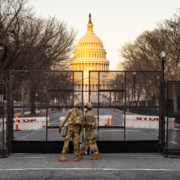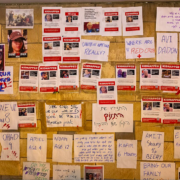Documenting and analyzing Graffiti and Street Art in connection with COVID-19
Almost every major political or social development seems to inspire individuals to write graffiti or street art.
Over the past two years, a considerable amount of graffiti and street art has been produced in connection with the killing of George Floyd by a Minneapolis police officer, the Black Lives Movement, protests against racist memorials and monuments, and dissatisfaction with former President Trump, his family and administration, and with similar right-wing populist leaders throughout the world (e.g., Bolsonaro).
The public has also witnessed graffiti and street art in connection with the COVID-19 pandemic that has raged throughout the world for the past year-and-a-half. Many of us have seen the images of graffiti and street art connected to the pandemic in the news media, in particular print media (especially newspapers and magazines) and via social media websites like Instagram.
Why has this occurred? In part, there has been an increased availability of urban public space for graffiti writers and street artists to do their work as many retail businesses temporarily or permanently closed, and the windows of their shops have been covered by plywood, thus providing more available canvasses. Even the temporary shelters that many restaurants have erected on sidewalks and streets have been hit by taggers. In NYC alone, in 2019 the city cut its budget in graffiti and street art eradication.
Short of a full accounting of COVID-19 graffiti and street art, researchers Heather Shirey & David Todd Lawrence are trying to achieve, there are a number of recurrent themes that these Coronavirus images play on like fear, frustration, hope, mourning, solidarity, and thanks to front line health care workers like doctors and nurses.
Many of the images are of people, some of them iconic (e.g., Bill Gates, Vincent Van Gough, Steve Jobs, etc.) wearing face masks, protective gloves or other assorted Personal Protective Equipment (PPE). A smattering of graffiti and street art images have superman logos painted on them. Other pieces involve a cataloguing of previous pandemics in order to contextualize the current one that we are experiencing. Some of the work approaching street art have sheets draped as masks in front of murals, street art or graffiti depicting images of people. Otherwise pieces are monochromatic, while others are multicolored.
Most of the content about graffiti and street art and COVID produced by the news media mainly contain images. Few of them provide analyses. But recent scholarship is changing all this. There are now a handful of interesting pieces of scholarship, published in scholarly journals like Crime, Media, Culture, the Nuart Journal, and Visual Studies, that are addressing the graffiti and street art of COVID.
It is through this kind of scholarly analysis that we will have a deeper and richer understanding of the graffiti and street art produced during this time period.
Photo Credit
Photographer: duncan
Title: Coronavirus graffiti, Leake Street

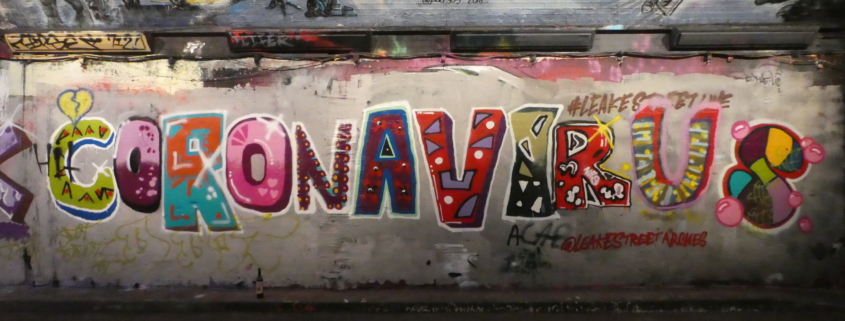
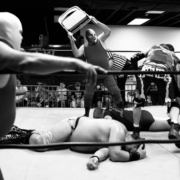



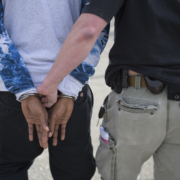
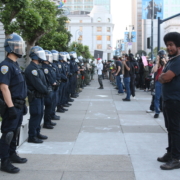 Creative Commons
Creative Commons